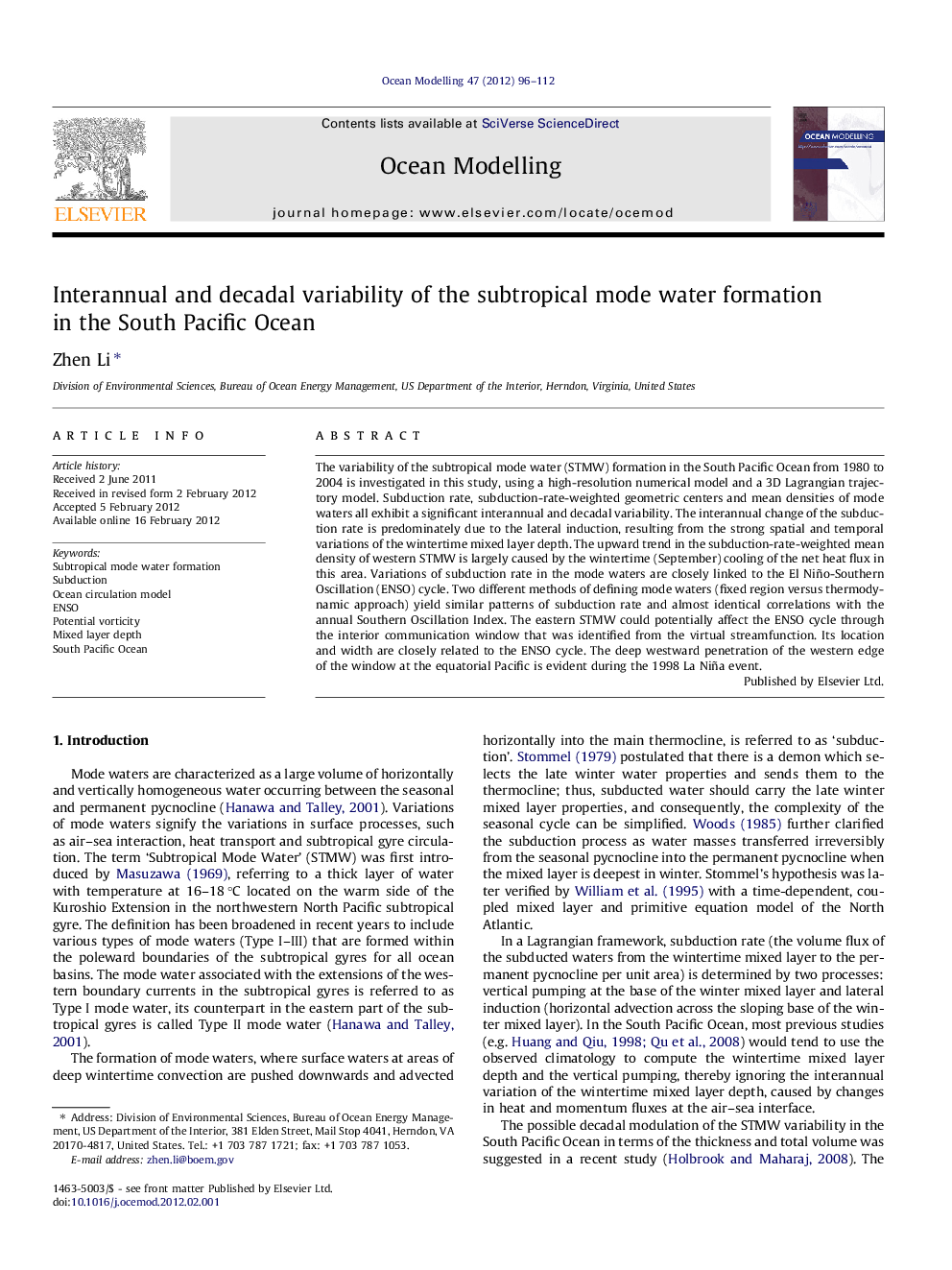| Article ID | Journal | Published Year | Pages | File Type |
|---|---|---|---|---|
| 4552229 | Ocean Modelling | 2012 | 17 Pages |
The variability of the subtropical mode water (STMW) formation in the South Pacific Ocean from 1980 to 2004 is investigated in this study, using a high-resolution numerical model and a 3D Lagrangian trajectory model. Subduction rate, subduction-rate-weighted geometric centers and mean densities of mode waters all exhibit a significant interannual and decadal variability. The interannual change of the subduction rate is predominately due to the lateral induction, resulting from the strong spatial and temporal variations of the wintertime mixed layer depth. The upward trend in the subduction-rate-weighted mean density of western STMW is largely caused by the wintertime (September) cooling of the net heat flux in this area. Variations of subduction rate in the mode waters are closely linked to the El Niño-Southern Oscillation (ENSO) cycle. Two different methods of defining mode waters (fixed region versus thermodynamic approach) yield similar patterns of subduction rate and almost identical correlations with the annual Southern Oscillation Index. The eastern STMW could potentially affect the ENSO cycle through the interior communication window that was identified from the virtual streamfunction. Its location and width are closely related to the ENSO cycle. The deep westward penetration of the western edge of the window at the equatorial Pacific is evident during the 1998 La Niña event.
► Variability of South Pacific subtropical mode water (STMW) is examined via a model. ► Variations of subduction rate in the STMW are closely linked to ENSO cycle. ► Eastern STMW could affect ENSO cycle through the interior communication window.
